|
Page < 1 2 3 4 5 6 7 8 9 10 11 >
Negationism and
the Muslim Conquests -
by Francois Gautier
Allah's
Apostle said "I have been made victorious with terror (cast
in the hearts of the enemy).
- Bukhari
4:52:220
(source:
Fighting
for the Cause of Allah (Jihad) - usc.edu). For
information on Jihad refer
to chapter on Glimpses
XVIII
***
"Those
who cannot remember the past are condemned to repeat it"
- George
Santayana (1863
- 1952) American philosopher. The Life of Reason, Volume 1, 1905. Refer to the Holocaust.
***
 Francois
Gautier (1950 - )
Paris-born, he has lived
in India for 30 years, is a political analyst for Le
Figaro, one of France's largest circulation newspaper. He defends
Indian nationalism. He caused a storm of controversy in India by advocating
reunification with Pakistan. Author of several books, including
A
Western journalist on India : The Ferengi's Columns
and Rewriting
Indian History Francois
Gautier (1950 - )
Paris-born, he has lived
in India for 30 years, is a political analyst for Le
Figaro, one of France's largest circulation newspaper. He defends
Indian nationalism. He caused a storm of controversy in India by advocating
reunification with Pakistan. Author of several books, including
A
Western journalist on India : The Ferengi's Columns
and Rewriting
Indian History
"Muslims invaders did
record with glee their genocide on Hindus, because they felt all
along that they were doing their duty; that killing, plundering, enslaving and
razing temples was the work of God, Mohammed. Indeed, whether it was Mahmud of
Ghazni (997-1030), who was no barbarian, although a Turk, and patronised art and
literature, would recite a verse of the Koran every night after
having razed temples and killed his quota of unbelievers; or
Firuz Shah Tughlak (1351-1388) who personally confirms that the destruction
of Pagan temples was done out of piety and writes:
"on the day of a Hindu festival, I went there myself, ordered the
executions of all the leaders AND PRACTITIONERS of his abomination; I destroyed
their idols temples and built mosques in their places".
(source: Negationism
and the Muslim Conquests -
by Francois Gautier). Refer
to Will
Islam convert itself? – By Francois Gautier - indowave.com. Refer to Ignore
this genocide, we're secular - By Rajeev Srinivasan - rediff.com).
Refer to
Why
did Aurangzeb Demolish the Kashi Vishvanath? - By Koenraad Elst. Also refer to Blasts
in Varanasi.
Refer
to Islamic Jihad in the chapter on Glimpses XXI
and India,
Jihad’s Permanent Battleground - By Srdja
Trifkovic
and The
Legacy of Jihad in India - By Andrew G Bostom - Americanthinker.com.
Refer
to Genocide and Ethnic Cleansing
of Kashmiri Hindu Pandits - And the World Remained Silent - Movie http://www.jaia-bharati.org/films/and-the-world.mpg.
Refer
to Ethnic
cleansing of Hindus in
Bangladesh - muktomona.com.
Refer
to video Statistics
on Islamic Terrorism
- By B Raman.
In
India, a whole literature has developed which denies, minimizes or whitewashes
this history.
Note:
Contrary to the propaganda of
Islamic apologists, many Sufi "saints" were instigators and enthusiastic
participants in jihad as documented in
R M Easton's
scholarly study
Sufis of Bijapur -
published by Princeton University Press. 1978.
 Serge
Trifkovic ( ? ) author of The
Sword of the Prophet: History, Theology, Impact on the World
has observed in his article: Serge
Trifkovic ( ? ) author of The
Sword of the Prophet: History, Theology, Impact on the World
has observed in his article:
"India
prior to the Moslem invasions was one of the world’s great
civilizations. Tenth century Hindustan matched its contemporaries
in the East and the West in the realms of philosophy, mathematics,
and natural science. Indian mathematicians discovered the number
zero (not to mention other things, like algebra, that were later
transmitted to a Moslem world which mistaken has received credit
for them.) Medieval India, before the Moslem invasion, was a
richly imaginative culture, one of the half-dozen most advanced
civilizations of all time. Its sculptures were vigorous and
sensual, its architecture ornate and spellbinding. And these were
indigenous achievements and not, as in the case of many of the
more celebrated high-points of Moslem culture, relics of
pre-Moslem civilizations that Moslems had overrun.
Moslem
invaders began entering India in the early 8th century,
on the orders of Hajjaj, the governor of what is now Iraq. (Sound
familiar?) Starting in 712 the raiders, commanded by Muhammad
Qasim, demolished temples, shattered sculptures, plundered
palaces, killed vast numbers of men — it took three whole days
to slaughter the inhabitants of the city of Debal — and carried
off their women and children to slavery, some of it sexual."
"
The
mountainous northwestern approaches to India are to
this day called the Hindu Kush, "the
Slaughter of the Hindu," a reminder of the days
when Hindu slaves from Indian subcontinent died in harsh Afghan
mountains while being transported to Moslem courts of Central
Asia."
(source:
Refer to
Why
did Aurangzeb Demolish the Kashi Vishvanath? - By Koenraad
Elst.
Watch History
of Ayodhya - videogoogle.com.
For more refer to chapter on
Hindu
Art. For
more on Islamic Terrorism refer to chapter on Glimpses
XV and Glimpses
XVIII. Refer to
My
People, Uprooted: "A
Saga of the Hindus of Eastern Bengal" -
By Tathagata Roy.
Also
refer to India:
Putting the Fallouts of the Islamic Invasion and British Occupation in
Perspective - by
Alamgir Hussain - islam-watch.org. Refer
to Heroic
Hindu Resistance to Muslim Invaders (636 AD to 1206 AD) - By Sita Ram Goel.
Voice of India, New Delhi. Refer
to Islam
Under Scrutiny by Ex-Muslims - By Alamgir Hussain -
islam-watch.org.
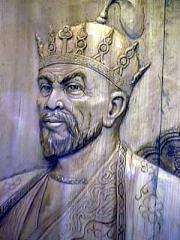 Amir Timur
or Tamerlane (1336 - 1405)
Turkmen Mongol conqueror wrote: Amir Timur
or Tamerlane (1336 - 1405)
Turkmen Mongol conqueror wrote:
"My
principal object in coming to Hindustan… has been to accomplish
two things. The first was to
war with the infidels, the enemies of the Mohammadan religion; and
by this religious warfare to acquire some claim to reward in the
life to come. The other was… that the army of Islam might gain
something by plundering the wealth and valuables of the infidels:
plunder in war is as lawful as their mothers’ milk to Musalmans
who war for their faith.”
While studying the legacy of Muslim
rule in India, it has to be constantly borne in mind that the
objectives of all Muslim invaders and rulers were the same as
those mentioned above. Timur or Tamerlane himself defines them
candidly and bluntly while others do so through their chroniclers.
(source: The
Legacy of Muslim Rule in India - By K S Lal). Refer
to Romila
Thapar’s Kluge Prize – By Dr. Gautam Sen - vigilonline.com.
For
more refer to Rajputs
and Invasion of India.
To start with he stormed the fort
of Kator on the border of Kashmir. He ordered his soldiers "to kill all the
men, to make prisoners of women and children, and to plunder and lay waste all
their property".
Next, he "directed towers to
be built on the mountain of the skulls of those obstinate unbelievers".
Soon after, he laid siege to Bhatnir defended by Rajputs. They surrendered after
some fight, and were pardoned. But Islam did not bind Timur to keep his word
given to the "unbelievers". His Tuzk-i-Timuri
records: "In a short space of time all the people in the fort
were put to the sword, and in the course of one hour the heads of 10,000
infidels were cut off. The sword of Islam was washed in the blood of the
infidels, and all the goods and effects, the treasure and the grain which for
many a long year had been stored in the fort became the spoil of my soldiers.
They set fire to the houses and reduced them to ashes, and they razed the
buildings and the fort to the ground."
By now Timur had
captured 100,000 Hindus. As he prepared for battle against the
Tughlaq army after crossing the Yamuna, his Amirs advised him
"that on the great day of battle these 100,000 prisoners
could not be left with the baggage, and that it would be entirely
opposed to the rules of war to set these idolators and enemies of
Islam at liberty". Therefore, "no other course remained
but that of making them all food for the sword".
Tuzk-i-Timuri continues: "I proclaimed throughout the camp
that every man who had infidel prisoners should put them to death,
and whoever neglected to do so should himself be executed and his
property given to the informer. When this order became known to
the ghazis of Islam, they drew their swords and put their
prisoners to death."
(source: Kashmir
Islamic Atrocities in India). Refer to Ignore
this genocide, we're secular - By Rajeev Srinivasan - rediff.com).
Also refer to Blasts
in Varanasi. Refer
to video Statistics
on Islamic Terrorism
- By B Raman. Refer to Will
Islam convert itself? – By Francois Gautier - indowave.com.
Ghazw
(plural ghazawāt) is an Arabic word meaning an armed incursion for the
purposes of conquest, plunder, or the capture of slaves and is cognate with the
terms ghāziya and maghāzī. For
the ghāzīs in the marches, it was a religious duty to ravage the
countries of the infidels who resisted Islam, and to force them into subjection.
(source: Cambridge
History of Islam p. 283).
American Historian Abraham
Valentine Williams Jackson (1862-1937) wrote:
"At
Muhamud's blockade the defenders "fell to the earth like
sparrows before the hawk." Immense stores of treasure and
jewels, money and silver ingots, were laden upon camels, and a
pavilion of silver and a canopy of Byzantine linen reared upon
pillars of silver and gold were among the prizes of the Holy War.
The booty was displayed in the court of the palace at Ghazni,
"jewels and unbored pearls and rubies, shinning like sparks
or iced wine, emeralds as it were sprigs of young myrtle, diamonds
as big as pomegrantes." The Eastern chronicles tell of
seventy million silver dirhams, and hundreds of thousands of
pounds weight of silver cups and vessels; and, with every
allowance for exaggeration, the spoils must been colossal. All
the world flocked to Ghazni to gaze upon the incredible wealth of
India. Such
rewards were incentives enough to carry on the pious work. Year
after year Mahmud swept over the plains of Hindustan, capturing
cities and castles, throwing down temples and idols, and earning
his titles of "Victor"
and "Idol-breaker,"
Ghazi and But-shikan.
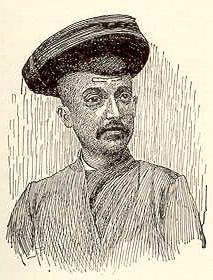 Zeal
for Islam was the dominant role of the tenth-century Turks, as of
most new converts. The
great missionary creed of Mohammed, which to the Arabs and
Persians had become a familiar matter of routine, was a source of
fiery inspiration to the untutored men of the steppes. To spread
the faith by conquest doubled their natural zest for battle and
endowed them with the devoted valor of martyrs. Zeal
for Islam was the dominant role of the tenth-century Turks, as of
most new converts. The
great missionary creed of Mohammed, which to the Arabs and
Persians had become a familiar matter of routine, was a source of
fiery inspiration to the untutored men of the steppes. To spread
the faith by conquest doubled their natural zest for battle and
endowed them with the devoted valor of martyrs.
Mahamud
was a staunch Moslem, and he vowed that every year he would wage a
Holy War against the infidels of Hindustan. The sack of Somnath
had made Mahmud of Ghazni a champion of the faith in the eyes of
every Moslem for nearly nine centuries, and the feat, signal
enough in itself, has been embellished with fantastic
legends."
Mahmud died in 1030 A.
D. and his tomb and two lofty minarets, stand to show Ghazni's
life. On one of the minarets one may still read the resonant
titles of the Idol-breaker, and on the marble tombstone an
inscription entreats "God's mercy for the great Amir Mahmud."
Soon India was to witness something very like a repetition of his
swift irresistible raids. For more than a century there was peace,
at least little war. Probably the Hindu troops and Hindu officials
had to some extent Indianized them, and the last descendants of
Mahmud made their home at Lahore without difficulty... Mu'izz-ad-din,
commonly known as Mohammad Ghori,
led a series of campaigns in India which recalled the days of the
Idol breaker nearly two centuries before.
For thirty years Mahmud
had ravaged Hindustan from
Indus to the Ganges; and for thirty years Mohammed Ghori harried
the same country in the same way...full of religious zeal, and
eager to send the "groveling crow-faced Hindus to the fire of
hell."
(source:
History of
India - By A V Williams Jackson volume
3 p. 17 - 28 and 52 - 54).
A
country is never fully defeated as long as its martial and intellectual leaders
exist. A self-conscious imperialism undertakes to reduce them as its first
important task. Muslims coming to India found brave, armed men and a Brahmin
class providing cultural and spiritual leadership. Dr.
B R Ambedkar, quoting Muslim historians, says the first act of
religious zeal by Mohammad bin Qasim, the
first Arab invader, was circumcision of Brahmins. "But, after they objected, he
put all above the age of seventeen to death."
(source:
The Colonial Genesis of Anti-Brahminism - By Ram Swarup -
hinduismtoday.com).
A
few known historical figures can be used to justify this
estimate. The Encyclopaedia Britannica recalls
that in December 1398 AD, Taimurlane ordered the execution of at
least 50,000 captives before the battle for Delhi; likewise, the
number of captives butchered by Taimurlane's army was about
100,000.
The Britannica
again mentions that Mughal emperor
Akbar ordered the massacre of about 30,000 captured Rajput
Hindus on February 24, 1568 AD, after the battle for Chitod, a
number confirmed by Abul Fazl, Akbar's court historian.
Afghan historian Khondamir notes that
during one of the many repeated invasions on the city of Herat
in western Afghanistan, which used to be part of the Hindu
Shahiya kingdoms '1,500,000 residents perished.' '
Thus, 'it is evident that the mountain range was named as Hindu
Kush as a reminder to the future Hindu generations of the
slaughter and slavery of Hindus during the Moslem conquests.'
(source: Where's
India's holocaust museum? - By Francois Gautier -
rediff.com). Refer
to Ethnic
cleansing of Hindus in
Bangladesh - muktomona.com.
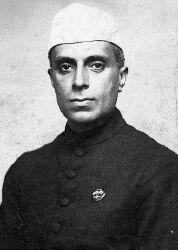 Jawaharlal
Nehru (1889-1964) first
prime minister of free India, was more than a deeply moral human
being. He wrote in his Discovery
of India: Jawaharlal
Nehru (1889-1964) first
prime minister of free India, was more than a deeply moral human
being. He wrote in his Discovery
of India:
"In
Kashmir a long-continued process of conversion to Islam had
resulted in 95 per cent of the population becoming Moslems, though
they retained many of their old Hindu customs. In the middle
nineteenth century the Hindu ruler of the state found that very
large numbers of these people were anxious to return en bloc to
Hinduism.
The
Moslems who came to India from outside brought no new technique or
political or economic structure. In spite of a religious belief in
the brotherhood of Islam, they were class bound and feudal in
outlook. In technique and in the methods of production and
industrial organization, they were inferior to what prevailed in
India. Thus their influence on the economic life of India and the
social structure was very little."
(source:
The
Discovery of India - By Jawaharlal Nehru
Oxford University Press. 1995. p 267). Refer to Islam:
The Arab Imperialism - By Anwar Shaikh. Refer
to Genocide and
Ethnic Cleansing of Kashmiri Hindu Pandits - And the World
Remained Silent - Movie http://www.jaia-bharati.org/films/and-the-world.mpg.
Refer
to Kashmiri
Pundits : Are they facing a Dodo future?
and Kashmiri
pandits alienated again - ibnlive.com.
Refer
to video Statistics
on Islamic Terrorism
- By B Raman. Refer to Will
Islam convert itself? – By Francois Gautier - indowave.com.
A section of the Indian
intelligentsia is still trying to erase from the Hindus' memory the history
of their persecution by the swordsmen of Islam.
The Islamic
reports on the massacres of Hindus, destruction of Hindu temples, the abduction
of Hindu women and forced conversions, invariably express great glee and pride.
They leave no doubt that the destruction of Paganism by every means, was
considered the God-ordained duty of the Moslem community. Yet, today many Indian
historians, journalists and politicians, deny that there ever was a Hindu-Moslem
conflict. They shamelessly rewrite history and conjure up centuries of
Hindu-Moslem amity; now a growing section of the public in India and the West
only knows their negationist version of history. It is not a pleasant task to
rudely shake people out of their delusions, especially if these have been
wilfully created; but this essay does just that.
(source: Negationism
in India: Concealilng the Record of Islam - By Koenraad Elst).
Refer
to Will
Islam convert itself? – By Francois Gautier - indowave.com.
Refer
to Genocide and Ethnic Cleansing
of Kashmiri Hindu Pandits - And the World Remained Silent - Movie
http://www.jaia-bharati.org/films/and-the-world.mpg
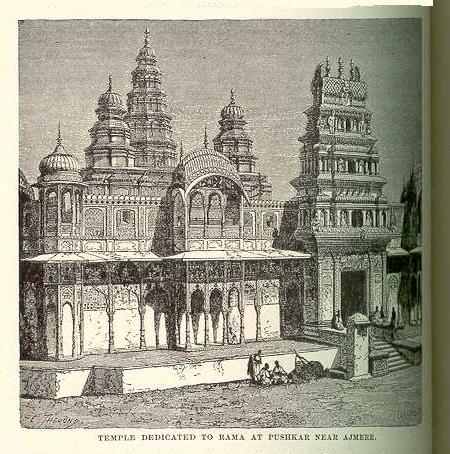
In
fact according to the biography by Vincent Smith, Akbar enjoyed 'a
harem consisting of 5000 women, mostly Hindus'.
A section of the
Indian intelligentsia is still trying to erase from the Hindus'
memory the history of their persecution by the swordsmen of Islam.
(image
source: History of
India - By A V Williams Jackson).
***
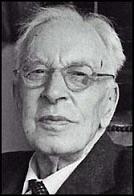 Arnold
Toynbee (1889-1975) the great British
historian. His massive research was published in 12 volumes
between 1934 and 1961 as A Study of
History. He was a
major interpreter of human civilization in the 20th century and
he has
said: Arnold
Toynbee (1889-1975) the great British
historian. His massive research was published in 12 volumes
between 1934 and 1961 as A Study of
History. He was a
major interpreter of human civilization in the 20th century and
he has
said:
"Aurangzeb's
purpose in building those three mosques (Ayodhya, Kashi and
Mathura) was the same intentionally offensive political purpose
that moved the Russians to build their Orthodox cathedral in the
city centre at Warsaw. Those mosques were intended to signify that
an Islamic government was reigning supreme, even over Hinduism's
holiest of holy places. I must say that Aurangzeb had a veritable
genius for picking out provocative sites. Aurangzeb and Philip II
of Spain are a pair. They are incarnations of the gloomily
fanatical vein in the Christian-Muslim-Jewish family of religions.
Aurangzeb -- poor wretched misguided bad man -- spent a lifetime
of hard labour in raising massive monuments to his own discredit.
Perhaps the Poles were really kinder in destroying the Russians'
self-discrediting monument in Warsaw than you have been in sparing
Aurangzeb's mosques."
(source:
One World and India - Arnold Toynbee
Indian Council for Cultural Relations New Delhi. 1960 p 59 -
60).
For more on Arthur Toynbee
refer to chapter on Quotes.
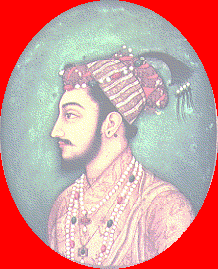 Prince
Muhammad Dara
Shikoh
(1627-1658 AD) the
favorite Sufi son of Moghul emperor, Shah
Jehan. Known the world over for his unorthodox and
liberal views. He was a mystic and a free
thinker. Dara Shikoh's most important legacy is
the translation of fifty Upanishads,
known under the title of Sirr-i-Akbar ("The Great
Secret"). Prince
Muhammad Dara
Shikoh
(1627-1658 AD) the
favorite Sufi son of Moghul emperor, Shah
Jehan. Known the world over for his unorthodox and
liberal views. He was a mystic and a free
thinker. Dara Shikoh's most important legacy is
the translation of fifty Upanishads,
known under the title of Sirr-i-Akbar ("The Great
Secret").
He
was executed on the orders of his brother - Aurangazeb. For
more on Dara Shikoh refer to chapter on Quotes.
If Christians are facing their past. Even in
religion class in Catholic schools in Belgium, we gave attention to the gruesome
part in Church history. In Latin America, the 500th anniversary of Columbus'
arrival has sparked some serious reconsideration both within and outside the
Church, about the role of Christianity in the wholesale destruction of all the
cultures without exception in the entire New World. But in India, we
find the unbelievable situation, that not only Muslim historians and public
figures refuse to face the truth about Muslim history
: neutral secular historians are also covering up and
denying the crimes which Islam has systematically committed, and even many
Hindus are denying the crimes committed against their own society.
(source: Ayodhya
and After - By Koenraad Elst). Watch History
of Ayodhya - videogoogle.com. Refer
to Romila
Thapar’s Kluge Prize – By Dr. Gautam Sen - vigilonline.com
Treatment of
Hindu Women
Sati - the only way out?
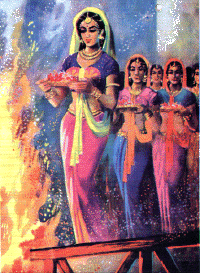 Padmini
was the queen of Rana Ratan Singh of Mewar in Rajasthan. She was famous for her
exquisite beauty. However, she also has an exalted place in the Rajput chivalry.
No woman in the history can match what Padmini did to uphold the honor of Indian
womanhood. It is said that one reason for Ala'uddin Khilji's invasion was his
infatuation for Padmini. The history records the chivalrous role of Padmini and
a number of other women of Mewar at the time when the famous citadel of Chitter
was besieged by Ala'uddin. Padmini
was the queen of Rana Ratan Singh of Mewar in Rajasthan. She was famous for her
exquisite beauty. However, she also has an exalted place in the Rajput chivalry.
No woman in the history can match what Padmini did to uphold the honor of Indian
womanhood. It is said that one reason for Ala'uddin Khilji's invasion was his
infatuation for Padmini. The history records the chivalrous role of Padmini and
a number of other women of Mewar at the time when the famous citadel of Chitter
was besieged by Ala'uddin.
The
historical records show, "The funeral pyre was lighted within the great
subterranean retreat, in chambers impervious to the light of the day, and
defenders of Chitter beheld in procession the queens, their own wives and
daughters, to the number of several thousands. The queen Padmini closed the
throng. Then they were conveyed to the cavern, and the opening was closed upon
them, leaving them to the final security from dishonor in the devouring
fire."
Thus Padmini and other women of Chitter preferred
heroic death to disgrace and rape. Rajput women are famed for their beauty and their
bravery.
The mention of Rajput women brings to mind images of the
valorous and pure Queen Padmini, who fought to maintain her dignity as a woman.
Rape,
genocide and gross human rights violations against ethno-cultural groups induce
victims to adopt defensive mechanisms.
Hindu women in
India adopted the Sati traditions to protect themselves from Muslim invaders, who
perpetrated the largest holocaust in history against Hindus.
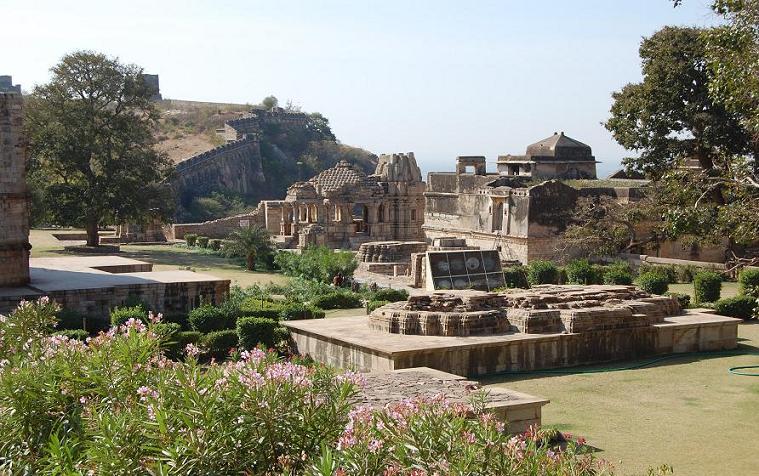
Place
of Valor - Chittorgrah, Rajasthan.
Immolation of
the Brave and beautiful Queen Padmini and the entire ladies
of the palace who preferred to meet their end through self immolation in a ceremony
called 'johar' rather than be part of a Allauddin Khilji's harem and thus
avoiding the gross human violations that would have occurred against them. Today
she is one of the epitomes of Indian woman-hood and a saga of sacrifice and
valor.
Islamic
conqueror Allauddin
Khilji slaughtered 30,000 Hindus. Even today minstrels sing of this tragic event
in the life of Chittorgarh. In
fact according to the biography by Vincent Smith, Akbar enjoyed 'a
harem consisting of 5000 women, mostly Hindus'. Hindu women in
India adopted the Sati traditions to protect themselves from Muslim invaders, who
perpetrated the largest holocaust in history against Hindus.
Sixty
years of feel-good negationism - Our
Indian History books lyrically hail dead men like Akbar as Akbar the Great. But
history is proof that on February 24, 1568, Akbar (the great) called for a
pogrom and brutal massacre of 30,000 defenseless Hindus of Chittorgarh,
Rajasthan who had refused to convert to Islam.
(Image source: Editor's
collection of photos taken during a recent visit).
***
According
to Dr.Younis Shaikh (Pakistani author of the
study ‘Islam and Women’), eighty million were slaughtered and millions of
women were raped. Sexual violence occurred on a gory
and unimaginable scale: it was standard practice for Islamic warlords like Ghori
and Ghazni to
unleash the mass rape and enslavement of hundreds of thousands of women after
the slaughter of all males. A large percentage of Muslims in South
Asia today are the progeny of forcible conversions and systematic rape campaigns
by marauding Muslim invaders.
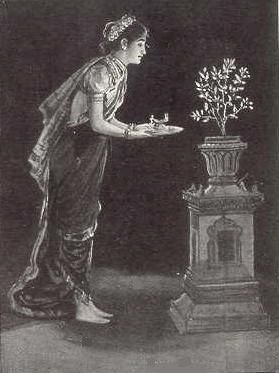

Hindu woman doing Tulsi and
Shiv puja in ancient India.
For more on Tulsi puja refer to chapter on Nature
Worship.
Sexual
violence occurred on a gory and unimaginable scale: it was standard practice for
Islamic warlords like Ghori and Ghazni to unleash the mass rape and enslavement
of hundreds of thousands of women after the slaughter of all males. The
tradition of sati, where Hindu women voluntarily cast themselves onto burning
cremation grounds after their husbands’ death, gained widespread acceptance
during the Islamic invasions.
(image source: The
Splendour That Was 'Ind' - By K T Shah p 192).
***
As a
result, Hindu women often veiled themselves in public to avoid the eyes of
rapacious Islamic conquerors. This was especially prevalent in regions with high
Muslim populations, such as Hyderabad under the Nizams. The
tradition of sati, where Hindu women voluntarily cast themselves onto burning
cremation grounds after their husbands’ death, gained widespread acceptance
during the Islamic invasions. The most famous instance took place
when Muslim invaders overran Chattisgarh in 1568: rather than submit to the rape
and slavery that would follow, eight thousand heroic Hindu women committed sati
en masse.
(source: Veiled
Threats to Democracy - By Ron Banerjee - canadafreepress.com).
The famous iron
pillar in Delhi belonging
to the fourth-fifth century A.D. is a metallurgical wonder. This huge wrought
iron pillar, 24 feet in height 16.4 inches in diameter at the bottom, and 6 1/2
tons in weight has stood exposed to tropical sun and rain for fifteen hundred
years, but does not show the least sign of rusting or corrosion. Evidence
shows that the pillar was once a Garuda
Stambha from a
Vishnu temple. This
pillar was plundered by Islamic hoards from a temple dedicated to Vishnu and
added as a trophy in the Quwwat al-Islam mosque in Delhi.
Made of pure iron, which even today can be produced only in small quantities by
electrolysis. Such a pillar would be most difficult to make even today. Thus,
the pillar defies explanation.
"One does not need
to be communally-minded to infer that desecration of Hindu holy sites was held
to be meritorious activity in the entire Muslim world, which is why the writers
in question felt the need to glorify such acts, whether they actually took place
or not."
(source: Sanitizing
Temple Destruction by Islam - By Meenakshi Jain). Refer to An
Architect looks at the Taj Mahal Legend - By Marvin Mills, AIA and
Taj
Mahal an analysis of a great deception – By V S Godbole
Muhammadan
Architecture in India
The Arabs were,
indeed, themselves aware of the immense superiority of Indian
cultural and artistic achievements over their own. Al Beruni, the
famous philosopher and contemporary of Mahmud of Ghazni, familiar
with the splendor of Bagdad at its best, was amazed at the
excellence of Indian architectural monuments. “Our
people”, he says “when they see them wonder at them, and are
unable to describe them, much less construct anything like
them.”
Even the iconoclastic
fanatic, Mahmud of Ghazni himself, could not restrain his wonder
at the triumphs of Indian art he discovered at Mathura.
Farishta records a letter of
the raider to his lieutenant at Ghazni, in which he says:
“There are here
a thousand edifices as firm as the faith of the
faithful; nor is
it likely that this city has attained its present condition but at
the expense of many millions of dinars, nor could such another be
constructed under period of two centuries.”
 The first
Mussalman conquerors, in India just as much as in Persia and the
provinces of the Eastern Roman Empire, adapted
to their own use the structure of the conquered. The
continuation of the tradition thus involved led easily to the
perpetuation of all the builder’s conventions, - himself a fresh
convert, if not a persisting alien in faith, - in the architecture
that came into vogue after the Muslims had been established in the
countries of their conquest. Iconographic ornamentation, or
sculptured splendors of the converted Hindu temples, were thus
excluded from the mosques, architecturally designed on the same
principles as the temple it had replaced. But in the spirit and
the essence, in conception and design, the building remained the
same, even if it came to be called by another name. The first
Mussalman conquerors, in India just as much as in Persia and the
provinces of the Eastern Roman Empire, adapted
to their own use the structure of the conquered. The
continuation of the tradition thus involved led easily to the
perpetuation of all the builder’s conventions, - himself a fresh
convert, if not a persisting alien in faith, - in the architecture
that came into vogue after the Muslims had been established in the
countries of their conquest. Iconographic ornamentation, or
sculptured splendors of the converted Hindu temples, were thus
excluded from the mosques, architecturally designed on the same
principles as the temple it had replaced. But in the spirit and
the essence, in conception and design, the building remained the
same, even if it came to be called by another name.
There is, indeed
nothing surprising in this consummation. The
Muslims who came with the conquerors were soldiers, not artists.
When, therefore, they had to plan work of art, like a Jami Masjid
or Cathedral Mosque, they had of
necessity to employ the local artists; and the latter
unavoidably took at their model the achievements they were
themselves most familiar with. Besides, in the countries across
the north-western frontiers of India, from which the first Muslim
invaders came, Buddhist or Hindu influence had penetrated long
ages before, thanks to the missionary zeal of the Buddhist. Now
these people, accustomed for centuries to those conventions of
building which had satisfied their urge for a thousand years,
could not discard their cultural skin merely because they adopted
a new creed. Hence we
find the conquerors themselves imperceptibly adopting the Indian
rules and conventions of building, in their most solemn and
stately structures of public worship or royal habitation. Even
those features of the Muhammadan monuments of architecture of
India, which have been considered to be peculiarly Saracenic, seem
to be, when closely studied, Indian – Hindu – in origin,
conception, and execution. The ornamentation by arabesques was no
doubt a Muslim contribution in public buildings, as also the
intricate geometric patterns, or the ogee curves. But
the pointed or trefoiled arch, and the ribbed or spherical dome, -
commonly considered to be distinctive features in Muslim
architecture, - were in reality of Indian – Hindu origin.
The pointed arch,
was originally the temple niche of the Buddhist and Hindus. The
sculptured figures of religious significance were removed by the
Mulsim iconoclastic; and the niche, bare and simple, came to serve
as the Mihrb in the converted or the new mosque.
 Dr.
Ernest
Binfield Havell (1861-1934)
was a principal to the Madras College of Art in the
1890s and left as principal of the Calcutta College of Art some 20
years later. He wrote several books, including his book, Indian
Architecture - Its Psychology, Structure and History from the
First Mohammedan Invasion to the Present Day Dr.
Ernest
Binfield Havell (1861-1934)
was a principal to the Madras College of Art in the
1890s and left as principal of the Calcutta College of Art some 20
years later. He wrote several books, including his book, Indian
Architecture - Its Psychology, Structure and History from the
First Mohammedan Invasion to the Present Day
“The trefoil
arch was a compound aureole, or nimbus, make up of a combination
of the lotus and papal or banyan tree…..The papal leaf stood for
the glory round the head of the Buddha, while the lotus leaf
remained as before to indicate the shape of the aura which
surrounded the body. The intersection of the two formed the
trefoil arch. A very common variety of this was made by the
charka, or Wheel of the Law, which was also the emblem of the
sun-gods, - Vishnu, Surya and Mitra – taking place of the papal
leaf, making the crown of the arch round instead of pointed.”
"The dome that
other supposed peculiarity of the Muhammadan architecture, was
also known and used in Indian building long before Islam was
brought to India, and with a wealth of ornamentation abhorrent to
the followers of the Prophet of Arabia. The Stupa was the origin
of all such rounded construction; and this, and the different
forms of the temple, Shikhara, exemplify to the highest the
excellence achieved by Indian builders in this department.
"The oldest Mosque
in India, Qutbuddin's Mosque, was originally a Jain temple, which
the first Turkish conquerors of Delhi converted to their own use.
While, thus, the sides and the entrances were Musalman, the
pillars were ancient Jain, as also the roof, domes and other inner
ornamentation, where they did not offend the zeal of the true
believer."
(source: The
Splendour That Was India - By K T Shah D.B.
Taraporevala Sons & Co., Bombay 1930 p. 160 - 162). For more on
Ernest Binfield Havell, refer to chapter on Quotes.
The Muslims loved
rigid simplicity and were idol-breakers. The Muslims borrowed many
features of the Hindu art. According to Sir
John Marshall two of the most vital elements borrowed
from Hindus were the qualities of strength and grace. In no other
country except India are strength and grace so superbly united and
harmonized.
(source: Indian
Culture Through the Ages - Mohan Lal Vidyarthi
p 295).
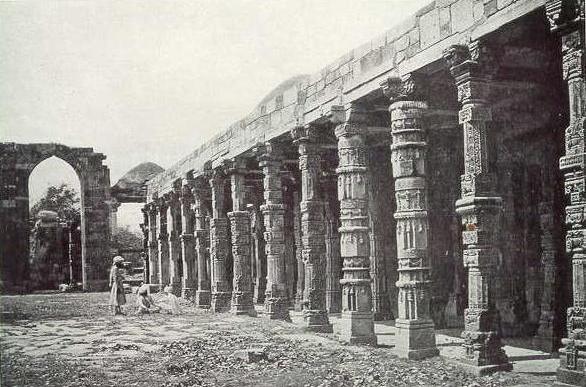
Colonnade
of Hindu Pillars near Q'utb Minar, Delhi.
According to British
Historian John Keay
in the book, History
of India, 27 previous Hindu and Jain temples were
destroyed and their materials reused to construct the Kutub Minar.
(image source:
The
Splendour That Was India - By K T Shah
p. 160).
***
Slavery under
Islamic Rule
The
poet Amir
Khusrau testified
that "the
Turks, whenever they please, can seize, buy or sell any
Hindu."
(source:
History of
India - By Elliot & Dawson,
vol 3 p. 561. Quoted from Amir Khusrau's Nuh Sipehr).
Shahabuddin
al-Umri
wrote about the days of Sultan Mohammed
bin Tughlaq
(1325-51):
"The Sultan never ceases to show the greatest zeal
in making wars upon the infidel....Every day thousands of slaves
are sold at a very low price, so great is the number of
prisoners."
(source:
Muslim
Slave System in Medieval India
- By K. S. Lal
p. 128).
Amir
Khusrau (1253 - 1325) Indo-Persian poet. A prolific
classical poet associated with royal courts of more than seven
rulers of Delhi Sultanate. He described:
"in
poetical metaphors the destruction of Hindu temples for the sake
of transformation into mosques."
(source: India
and Europe: An Essay in Understanding - By Wilhelm Halbfass
p.
31).
Present
day India - Apologies
for Islamic Evangelism
Ashraf,
Arjal and Ajlaf
Many
clichés
about conversion are kept alive by vested interests that prevent
an evaluation of the evangelical agenda. The foremost
being that conversion controversy is not a religious issue but a
vote-catching device. It is projected as a Hindu Conservative
Right versus Progressive Left confrontation. But time has shown
that proselytization is not a battle for votes, but a battle for
souls with a long history of cultural beliefs and behavior
patterns that goes far beyond the smaller fortunes of the Nehru or
the Sangh Parivar.
Another cliché
is that conversions have always been a result of the
low caste Hindus turning to other faiths to escape the oppression
by higher varnas. Christian and
Muslim evangelists are never
tired of projecting their faiths as truly egalitarian and
democratic based upon the ability to provide equal opportunities
to all their adherents irrespective of their birth or social class
or caste.
As a matter of
fact, caste has little to do with conversion. No
Muslim or Christian convert of low caste forgoes his caste and
gains a status of even workable equality with upper caste
Christians or Muslims. If it was so, Churches of all denominations
would not be demanding reservation for Christians on caste basis.
The motive to become Muslim or Christian was seldom freedom from
caste hierarchy. For vast populations it was always either force
or allurement.
When
Christianity arrived in
India
in the first century, the caste-system had become quite rigid. If
Christianity was such a relief for the underdogs why did it not
grow in leaps and bounds from its very arrival?
In early
centuries, let alone in
India
, in the
Mediterranean
as well, Christians were not focusing upon the destitute entirely
to multiply their fold. They influenced the highly placed sections
of the Roman and Greek bureaucracy and their great expansion came
only after the baptism of Constantine, the Roman Emperor.
In
India
, Christianity remained in isolation till the Protestant British
gave it an impetus, keeping at bay even the older Orthodox
Christians.
Similarly,
Islamic rulers did not target the lower-caste Hindus who were
incapable of effectively supporting the Turkish, Afghan and later
Mughal elite. They left these poor neoconverts to the Sufis whom
they seldom patronized and often persecuted as potential spokesmen
of the poor. An unabashed instigator of proselytization, the
historian Ziauddin
Barni (1285 - 1357) advised the Sultanate to target
the Brahmin intelligentsia and the big Hindu landowners and
merchants to be cowed into submission and conversion.
The
ruling Muslims in
India
never objected to the varna-jaati hierarchy as they themselves
believed in social status by birth, distinction between lord and
slave, ashraf, arjal and ajlaf.
The elite class belonged to the royalty and military eminence were
ashraf that included Qureshi, Jafri, Hussaini, Alvi, Osmani,
Farooqi, Siddiqui, Moghuls, Naqvi, Zaidi, Kazmi, Rizvi, Hashmi,
Abbasi, Arabs, Pathans, Sherwani, Shairazi, Isphani, Timizi,
Bukhari, Qazi, Mullick, and Mirzas etc. They were originally
foreigners and some of them even boasted of ‘blue blood’ as
they were able to import
Central Asia
women. During the days of the Islamic rule in
India
, they were the high and mighty and even when they married the
Hindu princely women whom they converted to their religion and
manners, they were known as torch bearers of the clans they
originally belonged to before settling in
India
. The converts to Islam from the Indian artisan, trading and
agricultural classes were called ajlaf and were the new middle
class of Islamic population in India, who were semi respectable
like the Ansari, Mansoori, Mirasi, etc. The lowest category that
converted from the Hindu shudra classes were called arjal and did
not take any Arabic caste names and continued to be known by their
professional such as
dhobi, halal khor, dhuniya, dom etc. To this day the matrimonial
columns of the Muslim community reflect this divide.
Conversion
for Colonization
It
is not totally true that the primary motive of Christian
missionaries of any denomination is to improve the standards of
life for the poor, the marginalized and the aborigines. If this
was so, vast populations of the South American and the African
continents would not be living even after conversion in poverty
and exploitation by the rich Christian West.
(source: India:
A Cultural Decline or Revival? - By Bharat Gupta p.
32 - 37). Refer
to Debunking
Dr. Zakir Naik - Contributed to this website by Dr. Alok Bohara - Professor
of Economics - University of New Mexico.
***
In
South Asia, where claims of "egalitarianism" are trump
cards in the competition with "caste-ridden" Hinduism,
the claim that Islam was the emancipator of the slaves in very
popular.
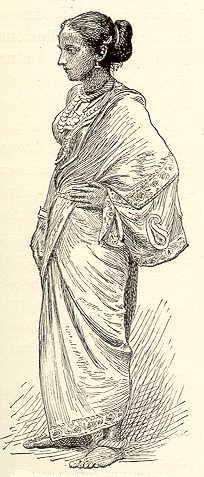
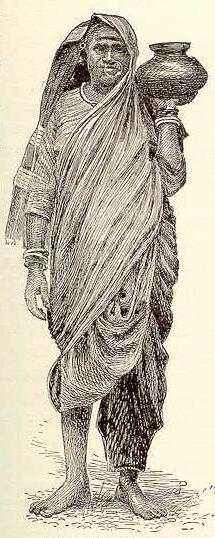
Hindu
women of India
(image
source: History of
India - By A V Williams Jackson).
***
As
Marxist historian,
Ifran Habib notes: "Slaves were, in
effect, deprived of caste and converted to Islam, could be put to
almost any task or learn any trade." "The number of
slaves in the Sultans' establishments were very high (50,000 under
Alaudddin Khilji, and 180,000 under Firuz Tughlaq), Barani
judges the level of prices by referring to slave prices, and the
presence of slaves were almost all-pervasive."
Foreign
travelers in different centuries, including the great
globe-trotter, Ibn
Batuta,
author of Travels
in Asia and Africa 1325-1354, testify that Indian slaves were very cheap because they were
very numerous in supply." William
Finch, who lived at the Moghul court in c. 1610, testifies that
hunting expeditions in the forest brought human as well as animal
prey.
B.
R. Ambedkar,
wrote: "The Hindus have their social evils. But there is one
relieving feature about them - namely that some of them are
conscious of their existence and a few of them are actively
agitating for their removal. The Muslims, on the other hand, do
not realize that they are evils and consequently do not agitate
for their removal."
(source:
Decolonizing
the Hindu Mind
- By
Koenraad Elst
p. 414-424). For more refer to chapter on
Caste System.
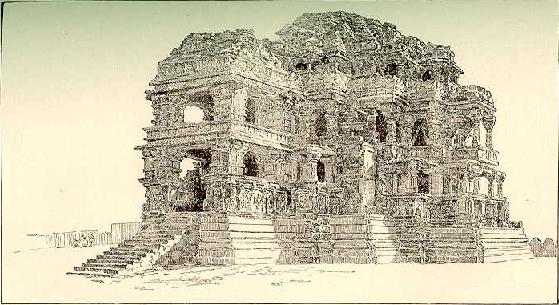
(image
source: History of
India - By A V Williams Jackson).
***
As Nobel
laureate V S Naipaul
said recently in an interview:
'India has been a wounded civilization
because of Islamic violence: Pakistanis know this; indeed they revel in it. It
is only Indian Nehruvians like Romila Thapar who pretend that Islamic rule was
benevolent. We should face facts: Islamic rule in India
was at least as catastrophic as the later Christian rule. The Christians created
massive poverty in what was a most prosperous country; the Muslims created a
terrorized civilization out of what was the most creative culture that ever
existed.'
(source: You
want a plebiscite? Okay, let's do a real one, then! - Rajeev Srinivasan).
Refer to Some
observations on Medieval India - History textbook for Class VII by Romila
Thapar). For
more information please refer to Hindu
Holocaust Museum).
Refer
to Islamic Jihad in the chapter on Glimpses XXI
and India,
Jihad’s Permanent Battleground - By Srdja
Trifkovic
and The
Legacy of Jihad in India - By Andrew G Bostom - Americanthinker.com.
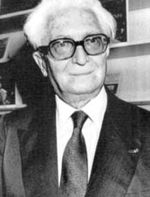 Ferdinand
Braudel (1902-1985) French historian, author of A
History of Civilizations, wrote: Ferdinand
Braudel (1902-1985) French historian, author of A
History of Civilizations, wrote:
"The conquest,
successful after countless setbacks, ended in wholesale military
occupation. The Muslims, who were few in number and based solely
in the larger towns, could not rule the country except by
systematic terror. Cruelty was the norm -
burnings, summary executions, crucifixions or impalements,
inventive tortures. Hindu temples were destroyed to make way for
mosques. On occasions there were forced conversions. If
ever there was an uprising, it was instantly and savagely
repressed: houses were burned, the countryside laid waste, men
were slaughtered and women were taken as slaves."
Usually, the plains were left to be run by native princes or
village communities. These intermediate authorities were
responsible for paying heavy taxes which were sometimes the
counterpart of a certain autonomy, as in the case of the rajahs of
Rajputana.
India survived only by virtue of its patience, its superhuman
power and its immense size. The levies it had to pay were so
crushing that one catastrophic harvest was enough to unleash
famines and epidemics capable of killing a million people at a
time. Appalling poverty was the constant counterpart of the
conquerors' opulence, including the splendor of the palaces and
feasts in Delhi, which the sultans had made their capital, and
which was a source of wonder to Muslim travelers such as the
famous Ibn Batuta.'
(source: A
History of Civilizations - by Ferdinand Braudel
- translated by Richard Mayne p. 232).
Louis-Frederic,
French Indologist, author of L'lnde de l'Islam,
frequently mentions forced conversions, massacres and temple demolitions.
On pages 42-49 he writes:
“Mohammed Ghori had the Hindu temples of Ajmer demolished
and ordered the construction of mosques and Quran schools on their runins…He
plundered Kanauj and Kashi and destroyed their temples.” While his generals
“destroyed in passing the remaining Buddhist communities of Bihar and
destroyed the universities of Nalanda.”
Bakhtiar Khilji “established a Muslim capital in Lakhanauti
(Gaur) on the Ganga and destroyed, in 1197, its basalt temples. In Odantpuri, in
1202, he massacred two thousand Buddhist monks. “
Meanwhile, back in Delhi: “This Quwwat-ul-Islam (Might of
Islam) was built in a hurry using the debris, chiefly sculpted pillars, of
twenty-seven dismantled Hindu temples.” Thirty years later, “Iltutmish did
not forget that he was a Muslim conqueror. He showed himself to be very pious,
never forgetting to do his five devotional daily….He likewise showed himself
totally intolerant vis-à-vis the Hindus who refused to convert, destroying
their temples and annihilating Brahmin communities.”
 However, in India a literature has
developed which denies, minimizes or white-washes this history. However, in India a literature has
developed which denies, minimizes or white-washes this history.
(source: Decolonizing
the Hindu Mind
- By
Koenraad Elst
p. 328).
Alain Danielou (1907-1994),
son of French aristocracy, author of numerous books on philosophy, religion,
history and arts of India, including Virtue,
Success, Pleasure, & Liberation : The Four Aims of Life in the Tradition of
Ancient India.
He points out that the sack
of the magnificent city of Vijayanagar,
which was like an island of civilization, chivalry, and beauty, in the midst of
a shattered and bleeding India, by Husain
Nizam Shah, was an
horror:
"During nearly FIVE months," reminisces
Danielou, "the
Muslims set themselves to the task of destroying everything, the temples, the
palaces, the magnificent residences. The scenes of terror and massacre were
unparalleled and mightier than the imagination can ever fathom. The victors
grabbed so much richness in gold, silver, jewels, precious furniture, camels,
tents, girls, boys, slaves, weapons, armours, that there were not a single plain
soldier who did not depart a rich man. And nothing remained after their
departure of the most beautiful and prosperous city of that time, but smoking
ruins."
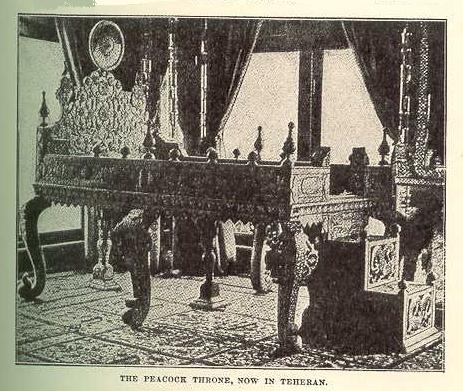
Nadir Shah,
of Iran attacked Delhi in 1739 and for a week his soldiers massacred everybody,
ransacked everything and razed the entire countryside, so that the survivors
would have nothing to eat. He took the fabulous Peacock throne to Iran.
(image
source: History of
India - By A V Williams Jackson).
***
The
Priceless Peacock Throne
What is the costliest single treasure made in the last
1,000 years? Wrought out of 1150 kg of gold and 230 kg of precious
stones, conservatively in 1999 the throne would be valued at $804
million or nearly Rs 4.5 billion. In fact when made, it cost twice
as much as the Tajmahal. On the top of each
pillar there were to be two peacocks, thick-set with gems and
between each two peacocks a tree set with rubies and diamonds,
emeralds and pearls. The ascent was to consist of three steps set
with jewels of fine water". Of the 11 jewelled recesses
formed around it for cushions, the middle one was intended for the
seat it for Emperor. Among the historical diamonds decorating it
were the famous Kohinoor
(186 carats). It was one of the most splendiferous thrones
ever made. it was encrusted with 26,733 precious stones! Ascended
by silver steps, it was sheeted with gold encrusted with emeralds
and rubies. Its back was a peacock's tail of sapphires, pearls and
turquoises. The
throne was completed after seven years of unceasing labour by the
best craftsmen of the empire and was valued at 10 million rupees
or Rs 500 crore today.
(source:
As
priceless as the Peacock Throne
- By K. R. N. Swamy - tribuneindia.com). For
more on the Kohinoor diamond refer to chapter on Glimpses
VIII.
"Nadir Shah,
of Iran attacked Delhi in 1739 and for a week his soldiers massacred everybody,
ransacked everything and razed the entire countryside, so that the survivors
would have nothing to eat. He went back to Iran taking with him precious
furniture, works of art, horses, the Kohinoor diamond,
the famous Peacock throne and 150 million rupees in gold."
(source: Histoire
de l' Inde - By Alain Danielou
p. 251- 290 or
A
Brief History of India).
***
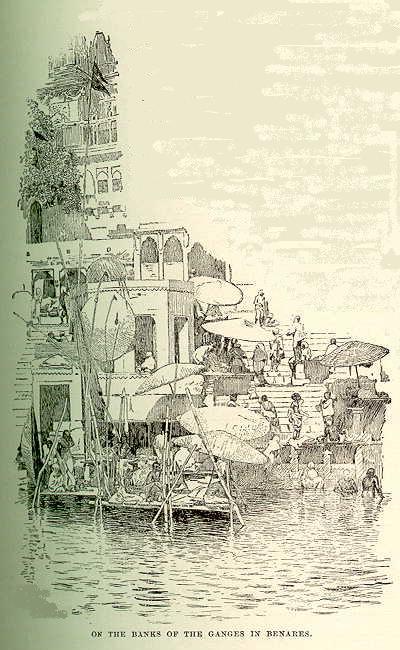 India
has been a land of freedom of thought and tolerance from the very dawn of her
history. Conformism of any kind, religious or political, is alien to her genius
and culture. As a result different
schools of philosophy, forms of government and ways of worship have co-existed
in it all through the history. Theistic and atheists, spiritualists, and
materialists, Shaivas and Vaishanavas, Buddhists, and Jains have flourished here
side by side with full freedom to preach their viewpoints and convert others to
their line of thinking and way of worship. Even Charwak, the Indian precursor of
Karl Marx, has been accepted as a Rishi in the Indian tradition. India
has been a land of freedom of thought and tolerance from the very dawn of her
history. Conformism of any kind, religious or political, is alien to her genius
and culture. As a result different
schools of philosophy, forms of government and ways of worship have co-existed
in it all through the history. Theistic and atheists, spiritualists, and
materialists, Shaivas and Vaishanavas, Buddhists, and Jains have flourished here
side by side with full freedom to preach their viewpoints and convert others to
their line of thinking and way of worship. Even Charwak, the Indian precursor of
Karl Marx, has been accepted as a Rishi in the Indian tradition.
(image
source: History of
India - By A V Williams Jackson).
This situation was changed by
the advent of Islam in this country. Apart from the fact that it came to India
on the wings of foreign invaders one of whose main motivation was spread of
Islam in this country, its very character was anti-thesis of Indian thinking and
attitude in regard to religion. Unlike the numerous forms of worship and systems
of thought that co-existed in India at the time, it stood for a monolithic
uniformity and conformism. It had no tolerance for any other form of worship. It
not only aimed at converting all the Indian to Islam, on the point of the sword
if necessary, but also expected such converts to reject their pre-Islamic past
and ancestors. The Muslim invaders
looked upon the people of this country as kafirs
or heretics. They behaved towards the Hindus in a barbaric manner. They destroyed
temples and libraries and indulged in most heinous type of vandalism. Their
cruelty and harshness towards Indian kafirs knew no bounds. When
Mahmud of Ghazni saw the temple of Mathura he was so much wonder struck by their
splendor, magnificence and art that he exclaimed that they must have been built
not by men but by angels who must have taken centuries to complete them.
But his Islamic zeal impelled him to raze them to the ground.
Indians who had been accustomed
to wars in which the women, the old, children, the peasants were left untouched
and who had never seen temples and other places of worship being desecrated or
destroyed like this felt aghast at the conduct of the new invaders. This
further explains the notorious declaration of Maulana Mohammed Ali, the
President of All-India Congress Committee in 1923 that for him a goonda and an
adulterer Muslim was thousand times superior to Mahatma Gandhi.
(source: Indianisation?
- By Balraj Madhok).
Sir Vidiadhar S. Naipaul
Nobel
laureate,
has said on the Ayodhya issue that: "Indian
intellectuals have a responsibility to the state and should start a debate on
the Muslim psyche" and that : "The idea (of the temple) should be
welcomed."
In
1739, Nadir Shah carried away from India money, plate, and jewels valued at from
thirty to sixty millions sterling.
(source:
Economic
Conditions of India - By P. P. Pillai
p. 12).
V
S Naipaul said in 1967: "Indians
are proud of their ancient, surviving civilization. They are, in fact, victims
of Islam."
For
more on destruction of Hindu temples, refer to
Hindu
Temples: What Happened to Them : (A Preliminary Survey) - By Arun Shourie.
Page < 1 2 3 4 5 6 7 8 9 10 11 >
|